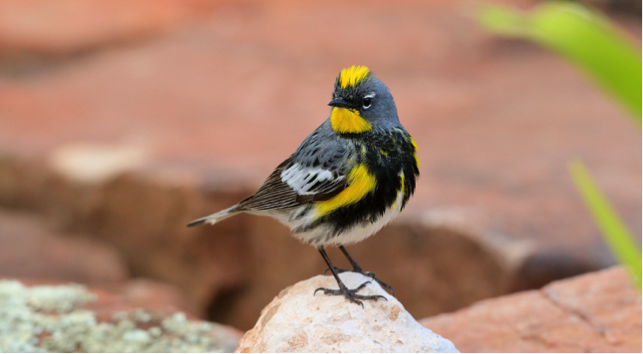By Bob Walker
One of my favorite little birds, the Yellow-rumped Warbler (Setophaga coronata), visits Los Alamos County most often during spring and fall migration. You may see them now, but they will be leaving soon.
The males are very brightly colored in spring, but they have more muted colors during the fall migration. The females are generally quite drab, but all Yellow-rumped Warblers can be identified by the yellow patch on their rump, and the patch of yellow below the front part of their wing. One of the most common warblers in North America, it feeds largely on berries and insects. In the spring it primarily catches insects and looks for grubs in trees, and in the fall it will eat berries of juniper, Virginia creeper, dogwood, poison oak, and poison ivy. In your back yard, you may see them coming to a water feature looking for a drink.
There’s more than one kind of Yellow-rumped Warbler – in the west, we primarily see the Audubon’s Warbler (Setophaga coronata auduboni, pictured at the top), and in the east, the predominant subspecies is the Myrtle Warbler (Setophaga coronata coronata), pictured below. Note the main difference is the color of the throat feathers (white for the Myrtle Warbler, yellow for Audubon’s). Because both these subspecies of Yellow-rumped Warblers hybridize, especially here in the southern Rockies, they are currently treated as a single species, but they were once considered two species, and someday may be reclassified as two species again, after consideration of DNA evidence.

You can also find more detailed articles about the Yellow-rumped Warbler on the web pages at identify.whatbird.com and allaboutbirds.org. Enjoy more beautiful photos of Yellow-rumped Warblers at the Alan Murphy and Robert Royse (Audubon’s) and Robert Royse (Myrtle) web sites.

